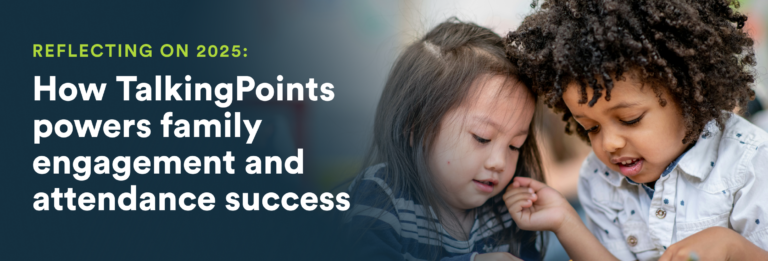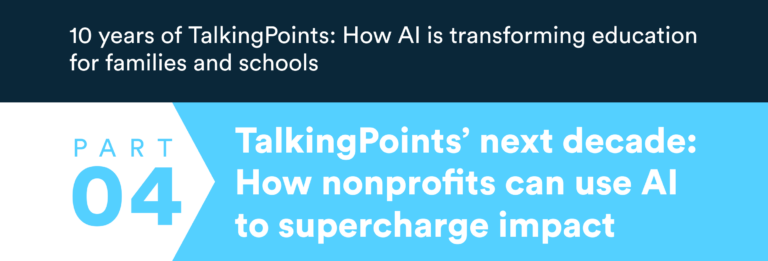Written by TalkingPoints
Much has been written about the effects of the COVID-19 pandemic on education. Stay-at-home orders and the shift to distance learning exposed and exacerbated existing inequities, challenged already overworked teachers to reinvent their curriculum for distance learning, and overwhelmed parents who suddenly had to get more involved with their children’s learning. It also may have resulted in millions of students falling behind academically in what is now referred to as “the COVID slide” (think “summer learning loss” multiplied by 10). There are so many reasons to despair.
And yet, those of us who have devoted our lives to education are, at our core, optimists. We believe in the potential of our work to transform lives.This historic pandemic might make it harder for us to find reasons for hope, but educators and entrepreneurs are wired to see potential where others might give up. Some of us see signs of promise for the day when our schools open again and children and teachers are reunited in the classroom.
Distance learning has blurred the lines between teachers and parents and increased empathy and understanding. Thrust into a more active role to ensure their children are getting the most out of online learning, parents realized that teaching is harder than it looks. And teachers developed more empathy toward parents, too. Some have had to wear both their professional teacher hat while developing online lesson plans, and their parent hat while supporting their own children’s learning at home. Others have gotten a better understanding of their students’ life circumstances after reaching out to encourage participation in online learning and asking about device and WiFi accessibility. Teachers learned which families had lost jobs and were struggling to keep kids fed and which ones were working double shifts and unable to provide supervision. Many teachers forwarded information on food banks; some even dropped off groceries at students’ homes.
The gravity of the situation made family-teacher connections and relationship building a priority and provided an impetus for teachers and schools to be both persistent and resourceful in figuring out how to reach families and how to maintain a sense of community. For example, administrators understood that for the most vulnerable students, providing meals for pick up or information on other social services meant nothing if the information was only in English. Teachers who had previously struggled to connect with the immigrant families of their English Language Learners (ELLs) discovered TalkingPoints and were suddenly able to connect with them through two-way translation and personalized content in any of the 100 languages TalkingPoints supports. Principals, school administrators, and teachers witnessed the positive effects of both increasing the frequency of their communications with families and of communicating with them in their own languages, to make them feel safe, connected and cared for. Whatever school looks like in the fall, we are hopeful that they will continue to invest their time in establishing and maintaining those connections, cultivating empathy, and communicating with cultural sensitivity.
Living through this period of forced distance learning has taught us more about the importance of family engagement and the power of family-teacher connections than the mountains of academic research papers that have been written on the subject. It has increased empathy between teachers and families, which is especially important at this time not just because of the pandemic but because of the severe stressors on families of color. And it forced the realization that when it comes to educating children, we really are all in this together. Family engagement is always a worthy goal, but the pandemic has made us seek out tools and methods to try to achieve it in culturally sensitive ways, even in the toughest of circumstances. Those lessons and tools need not be abandoned if and when we return to the classroom. Those learnings are ours to keep. Some good can come from these difficult times.



